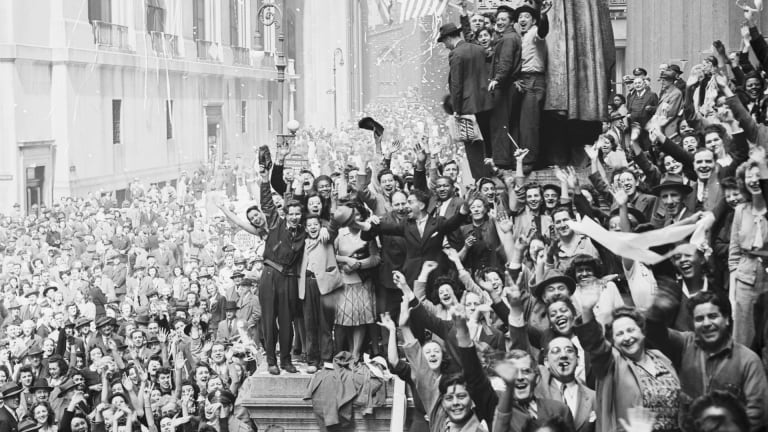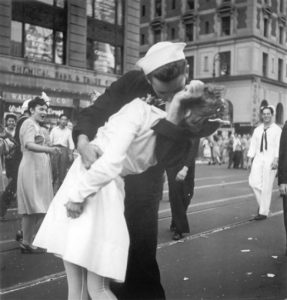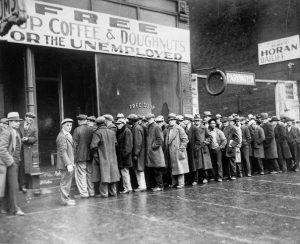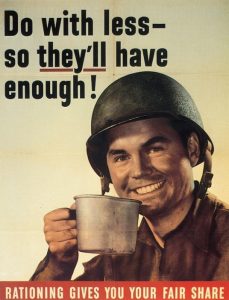In the spring and summer of 1945, the United States celebrated two very important milestones. VE Day (Victory in Europe) and VJ Day (Victory over Japan) were two of the most important dates of the 20th century. I remember my mother describing the euphoria as people were dancing in the streets. She looked forward to the return of her brother who would soon be back on US soil after spending several months in a German stalag.
Service men and women were returning home to their families and friends. A long-fought and costly war was finally over. Those men and women are called the greatest generation, and rightly so. I have great respect for all who served and made the sacrifice to give us the freedom and opportunities we have today. Following WWII, the US developed into the strongest economy in the world.
I wonder if it’s time to celebrate another milestone, although the actual date is not as clearly defined as VE or VJ Day. I would like to call it “VC” Day (Victory over COVID). With a large part of the US population having either recovered from the disease or accepted the vaccine, infection cases in the US are declining and life is beginning to return to a level of normal.
I wonder what will happen with our economy as we move into a post-COVID world. Perhaps we can make some parallels to the post–World War era (both WWI and WWII). Let’s take a look back.
The First and Second World Wars
The First World War (1914–1918, often called the war to end all wars) began in a time of relative economic prosperity in the US. Unlike WWII, which started as the US was coming out of the Great Depression, the US entered WWI with a modestly healthy economy.
Although 1917 was a bad year in the stock market, domestic production was strong, and most American families were in a good place economically. Following the war and the 1918 Spanish flu pandemic, although some economic policies caused a near depression in 1920, the economy began to grow. Enter the period known as “The Roaring 20’s.”
The Spanish flu pandemic began during WWI. According to a report, the Spanish flu infected about 500 million people worldwide and claimed around 50 million lives—including about 675,000 Americans, or about 0.67% of the country’s population. [1] Similar to the actions taken in 2020, measures were implemented to slow the spread. However, the economy did not shut down like we saw in 2020. Since the US was in the middle of WWI, it was essential that production remain high, and people continued to work. A report by Professors Benmelech and Frydman at the Kellogg School of Business provides the following overview:
Barro et al. (2020) estimate the effect of flu-related deaths in 43 countries in 1918-1920 and conclude that higher flu death rates led to declines in GDP and consumption of about 6%. Other work has focused exclusively on the United States. Exploiting spatial variation in mortality rates, Correia et al. (2020) show that areas in the US that were hit by the pandemic experienced a sharp decline in economic activity, and that the effects persisted until at least 1923. [1]
Interestingly, Benmelech and Frydman conclude that the 1918 pandemic did not have a great impact on the US economy overall as the gross domestic product and economy grew in 1919. Although the US did experience a recession in 1921, economists say that this was more related to the collapse of commodity pricing as Europe recovered from the war. Much of what helped the US economy enter the pandemic strong and stay strong was the impact of production to support the war effort.
The Second World War began as Germany invaded Poland in 1939. It wasn’t until the bombing of Pearl Harbor on December 7, 1941, that the US formally entered the war. During the 1930s, Franklin Roosevelt implemented jobs programs that put Americans to work.
These programs, including the establishment of the Tennessee Valley Authority and Works Progress Administration (WPA), employed 8.5 million people from 1935 to 1943. [2] As WWII continued, the US economic engine moved into full gear to produce war implements including planes, tanks, and guns. In fact, at the peak in late 1943 and early 1944, the US was producing almost as much munitions as all the allied countries and enemies combined.
During the peak of WWII, unemployment was at 1.2%. [3] During the war, spending was curtailed since Americans lived with rationing of goods as the war effort continued to consume available resources. This resulted in many Americans saving money and building up a nest egg of financial resources. Americans were saving an average of 21% of their disposable income. [3] By the end of the war, Americans were ready to spend.
At the end of WWII, factories converted back to making consumer goods. Automotive companies increased production of automobiles. This was the beginning of the love affair Americans had with cars. By 1950, 75% of Americans owned at least 1 car. By 1965, US auto manufacturers were producing 11.1 million cars annually. In addition, new home sales and home appliance sales skyrocketed. Frigidaire assembly lines had transitioned from producing B-29 aircraft propeller assemblies to refrigerators. This economic expansion continued and provided the standard of living that Americans continue to enjoy today.
This is the first of two articles. On the next editorial, we will compare post COVID to Post WWI and WWII. We will also look at how businesses and individuals can respond in a post COVID economy.
[1] Benmelech, Efraim and Carola Frydman. “The 1918 influenza did not kill the US economy.” Vox EU, 29 April 2020, https://voxeu.org/article/1918-influenza-did-not-kill-us-economy. Accessed 22 July 2021.
[2] History.com Editors. “Great Depression: Black Thursday, Facts & Effects.” History.com, 29 Oct. 2009 (updated 28 Feb. 2020), https://www.history.com/topics/great-depression/great-depression-history. Accessed 23 July 2021.
[3] Pruitt, Sarah. “The Post World War II Boom: How America Got Into Gear.” History.com, 14 May 2020, https://www.history.com/news/post-world-war-ii-boom-economy. Accessed 23 July, 2021.
–
 Paul V. Kumler, P.E., is president and founder of KTM Solutions, an engineering company that services the aerospace and large-scale manufacturing industries. KTM Solutions designs and builds custom machines and “tooling” (jigs, fixtures, below-the-hook lifting systems) supporting a broad clientele and various industries. (www.ktmmechanical.com) The company is headquartered in Greer, South Carolina, with a remote office in Charleston, South Carolina. Mr. Kumler serves in several volunteer roles including the SC Aerospace Advisory Board. Mr. Kumler, a professional engineer, is licensed in Louisiana, South Carolina, Texas, and Washington. He is married to Ginger A. Kumler. Together, they have two grown children and three grandchildren.
Paul V. Kumler, P.E., is president and founder of KTM Solutions, an engineering company that services the aerospace and large-scale manufacturing industries. KTM Solutions designs and builds custom machines and “tooling” (jigs, fixtures, below-the-hook lifting systems) supporting a broad clientele and various industries. (www.ktmmechanical.com) The company is headquartered in Greer, South Carolina, with a remote office in Charleston, South Carolina. Mr. Kumler serves in several volunteer roles including the SC Aerospace Advisory Board. Mr. Kumler, a professional engineer, is licensed in Louisiana, South Carolina, Texas, and Washington. He is married to Ginger A. Kumler. Together, they have two grown children and three grandchildren.





Be the first to comment on "Celebrating VC (Victory Over COVID)"